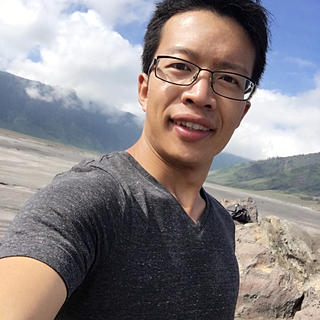Reading response to The Flaming Womb by Barbara Andaya
- Kankan Xie
- Oct 18, 2012
- 2 min read

At the very beginning of The Flaming Womb, Barbara Andaya quotes that ”a gender-oriented study should do more than put women into history” and that “it should also through light on the history—male as well as female—into which women are put.” (5) This point reminds me of Philip Kuhn’s approach to the history of Chinese diaspora, which advocates that scholars should not only focus on the study of the diasporic groups themselves, but also “study the ‘others’ whom Chinese have found themselves ‘among’ by breaking up ethnic boundaries.” I find both pieces very helpful in grasping a more panoramic historical landscape behind their respective theme (gender and Chinese diaspora). With such broader context, general yet fundamental questions beyond these themes could be thus tackled more effectively through this kind of “more-textured analysis”.
In the case of The Flaming Womb, Andaya has delicately scrutinized three major intertwined issues through the lens of gender: how the distinctive male-female relationship—in spite of variations among different cultures— paralleled with the geographical construction of Southeast Asia as a region; how the shifts of females social status coincided and were affected by the religious and socioeconomic changes in early modern Southeast Asia over time (esp. the notion of early modernity); and how a “history of women” can help to complicate the region’s history, which remains biased and problematic in many important respects due to the lack of literary tradition and the overwhelmingly male-dominated history construction.
While offering insightful ideas that may profoundly deepen our understanding of various dimensions of Southeast Asian history, as Andaya herself admitted, however, the writing of women’s history has its own intrinsic limitations that are very difficult to overcome—that is, being partial and preliminary due to the dearth of materials. In this sense, I doubt that the study of gender only provide an extra method (channel) to approach early modern Southeast Asian history. But does it also have the potential to become a central theme in early modern Southeast Asian history? If the answer is yes, then how can someone go beyond the footsteps of Andaya and write a more detailed vernacular history of women with limited historical records? If the answer is not that positive (not necessarily no), then the question would be, depending on how to define the notion of “early modernity”, how early a real history of women in Southeast Asia can be dated back to? But should the vernacular history of women necessarily relate to the advent of modernity?

![[书评·Book Review] 本尼迪克特·安德森和他所经历的东南亚研究](https://static.wixstatic.com/media/a03062_f24b8c917937480eb9f746d7304bc949~mv2.jpg/v1/fill/w_447,h_250,fp_0.50_0.50,lg_1,q_30,blur_30,enc_avif,quality_auto/a03062_f24b8c917937480eb9f746d7304bc949~mv2.webp)
![[书评·Book Review] 本尼迪克特·安德森和他所经历的东南亚研究](https://static.wixstatic.com/media/a03062_f24b8c917937480eb9f746d7304bc949~mv2.jpg/v1/fill/w_220,h_123,fp_0.50_0.50,q_90,enc_avif,quality_auto/a03062_f24b8c917937480eb9f746d7304bc949~mv2.webp)




![[Book Review] The Killing Season: A History of the Indonesian Massacres, 1965-66, by Geoffrey Robins](https://static.wixstatic.com/media/a03062_1a3a8c8e31064ff488fe179b96a0e03e~mv2.png/v1/fill/w_167,h_250,fp_0.50_0.50,q_35,blur_30,enc_avif,quality_auto/a03062_1a3a8c8e31064ff488fe179b96a0e03e~mv2.webp)
![[Book Review] The Killing Season: A History of the Indonesian Massacres, 1965-66, by Geoffrey Robins](https://static.wixstatic.com/media/a03062_1a3a8c8e31064ff488fe179b96a0e03e~mv2.png/v1/fill/w_38,h_57,fp_0.50_0.50,q_95,enc_avif,quality_auto/a03062_1a3a8c8e31064ff488fe179b96a0e03e~mv2.webp)
![[书评·Book Review] 本尼迪克特·安德森和他所经历的东南亚研究](https://static.wixstatic.com/media/a03062_f24b8c917937480eb9f746d7304bc949~mv2.jpg/v1/fill/w_380,h_250,fp_0.50_0.50,q_30,blur_30,enc_avif,quality_auto/a03062_f24b8c917937480eb9f746d7304bc949~mv2.webp)
![[书评·Book Review] 本尼迪克特·安德森和他所经历的东南亚研究](https://static.wixstatic.com/media/a03062_f24b8c917937480eb9f746d7304bc949~mv2.jpg/v1/fill/w_38,h_25,fp_0.50_0.50,q_90,enc_avif,quality_auto/a03062_f24b8c917937480eb9f746d7304bc949~mv2.webp)
![[知乎答题] 二战后的东南亚独立运动,要归功于日本发动的太平洋战争,对还是错 ?](https://static.wixstatic.com/media/a03062_c3905c1566984d498b7f79234274baab~mv2_d_3024_4032_s_4_2.jpg/v1/fill/w_186,h_250,fp_0.50_0.50,q_30,blur_30,enc_avif,quality_auto/a03062_c3905c1566984d498b7f79234274baab~mv2_d_3024_4032_s_4_2.webp)
![[知乎答题] 二战后的东南亚独立运动,要归功于日本发动的太平洋战争,对还是错 ?](https://static.wixstatic.com/media/a03062_c3905c1566984d498b7f79234274baab~mv2_d_3024_4032_s_4_2.jpg/v1/fill/w_38,h_51,fp_0.50_0.50,q_90,enc_avif,quality_auto/a03062_c3905c1566984d498b7f79234274baab~mv2_d_3024_4032_s_4_2.webp)
![[Research Paper] The Netherlands East Indies 1926 Communist Revolt Revisited: New Discoveries from S](https://static.wixstatic.com/media/a03062_570fb9458752482bb87ef6cd60ecadb6~mv2.png/v1/fill/w_176,h_250,fp_0.50_0.50,q_35,blur_30,enc_avif,quality_auto/a03062_570fb9458752482bb87ef6cd60ecadb6~mv2.webp)
![[Research Paper] The Netherlands East Indies 1926 Communist Revolt Revisited: New Discoveries from S](https://static.wixstatic.com/media/a03062_570fb9458752482bb87ef6cd60ecadb6~mv2.png/v1/fill/w_38,h_54,fp_0.50_0.50,q_95,enc_avif,quality_auto/a03062_570fb9458752482bb87ef6cd60ecadb6~mv2.webp)
![[知乎答题] 为什么马来群岛没形成过大一统的国家?](https://static.wixstatic.com/media/a03062_a53a07a2dba241dea8eae4656072201d~mv2.jpg/v1/fill/w_452,h_250,fp_0.50_0.50,q_30,blur_30,enc_avif,quality_auto/a03062_a53a07a2dba241dea8eae4656072201d~mv2.webp)
![[知乎答题] 为什么马来群岛没形成过大一统的国家?](https://static.wixstatic.com/media/a03062_a53a07a2dba241dea8eae4656072201d~mv2.jpg/v1/fill/w_38,h_21,fp_0.50_0.50,q_90,enc_avif,quality_auto/a03062_a53a07a2dba241dea8eae4656072201d~mv2.webp)
![[Book Review] The Men Who Lost Singapore, 1938–1942 , by Ronald McCrum](https://static.wixstatic.com/media/a03062_fb854ed991c442ac980024dba9a785a5~mv2.jpg/v1/fill/w_452,h_250,fp_0.50_0.50,q_30,blur_30,enc_avif,quality_auto/a03062_fb854ed991c442ac980024dba9a785a5~mv2.webp)
![[Book Review] The Men Who Lost Singapore, 1938–1942 , by Ronald McCrum](https://static.wixstatic.com/media/a03062_fb854ed991c442ac980024dba9a785a5~mv2.jpg/v1/fill/w_38,h_21,fp_0.50_0.50,q_90,enc_avif,quality_auto/a03062_fb854ed991c442ac980024dba9a785a5~mv2.webp)
![[AAS Annual Conference 2018] Beyond Borders: Global Perspectives on Early Communist Movements in the](https://static.wixstatic.com/media/a03062_b0f06f8ce529426896c8d084381b966f~mv2.png/v1/fill/w_452,h_250,fp_0.50_0.50,q_35,blur_30,enc_avif,quality_auto/a03062_b0f06f8ce529426896c8d084381b966f~mv2.webp)
![[AAS Annual Conference 2018] Beyond Borders: Global Perspectives on Early Communist Movements in the](https://static.wixstatic.com/media/a03062_b0f06f8ce529426896c8d084381b966f~mv2.png/v1/fill/w_38,h_21,fp_0.50_0.50,q_95,enc_avif,quality_auto/a03062_b0f06f8ce529426896c8d084381b966f~mv2.webp)
![[Conference] THE ASIAN ARC OF THE RUSSIAN REVOLUTION: SETTING THE EAST ABLAZE?](https://static.wixstatic.com/media/a03062_3a913c7313b94d069f2710d5b3d961b9~mv2.jpg/v1/fill/w_452,h_250,fp_0.50_0.50,q_30,blur_30,enc_avif,quality_auto/a03062_3a913c7313b94d069f2710d5b3d961b9~mv2.webp)
![[Conference] THE ASIAN ARC OF THE RUSSIAN REVOLUTION: SETTING THE EAST ABLAZE?](https://static.wixstatic.com/media/a03062_3a913c7313b94d069f2710d5b3d961b9~mv2.jpg/v1/fill/w_38,h_21,fp_0.50_0.50,q_90,enc_avif,quality_auto/a03062_3a913c7313b94d069f2710d5b3d961b9~mv2.webp)
![[Workshop] Transnational Leftism: The Comintern and the National, Colonial and Racial Questions](https://static.wixstatic.com/media/a03062_f217bfd790e24236bec27b6a02d7e2ed~mv2.jpg/v1/fill/w_190,h_250,fp_0.50_0.50,q_30,blur_30,enc_avif,quality_auto/a03062_f217bfd790e24236bec27b6a02d7e2ed~mv2.webp)
![[Workshop] Transnational Leftism: The Comintern and the National, Colonial and Racial Questions](https://static.wixstatic.com/media/a03062_f217bfd790e24236bec27b6a02d7e2ed~mv2.jpg/v1/fill/w_38,h_50,fp_0.50_0.50,q_90,enc_avif,quality_auto/a03062_f217bfd790e24236bec27b6a02d7e2ed~mv2.webp)
![[Talk] Estranged comrades: Communism, identity politics and interwoven networks of the late colonial](https://static.wixstatic.com/media/a03062_1b2878ab133f4093a934b82aed274e71~mv2.jpg/v1/fill/w_452,h_250,fp_0.50_0.50,q_30,blur_30,enc_avif,quality_auto/a03062_1b2878ab133f4093a934b82aed274e71~mv2.webp)
![[Talk] Estranged comrades: Communism, identity politics and interwoven networks of the late colonial](https://static.wixstatic.com/media/a03062_1b2878ab133f4093a934b82aed274e71~mv2.jpg/v1/fill/w_38,h_21,fp_0.50_0.50,q_90,enc_avif,quality_auto/a03062_1b2878ab133f4093a934b82aed274e71~mv2.webp)



Comments